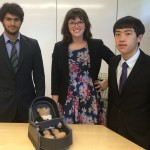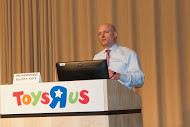 We all know it helps to have new eyes look at a problem – sometimes they see an overlooked solution. That is part of the reason why KID started TEST: Teach Early Safety Testing. We wanted to have undergraduate engineering students look with fresh eyes on some hazards in children’s products and see if they could come up with solutions. Along the way, the students learn something about design safety that they can apply to their future work as engineers – no matter the field they enter.
We all know it helps to have new eyes look at a problem – sometimes they see an overlooked solution. That is part of the reason why KID started TEST: Teach Early Safety Testing. We wanted to have undergraduate engineering students look with fresh eyes on some hazards in children’s products and see if they could come up with solutions. Along the way, the students learn something about design safety that they can apply to their future work as engineers – no matter the field they enter.
This spring we posed two problems to groups of freshman student engineers at Northwestern University Segal Design Institute. Four teams looked at the question: Can you make a safe product that soothes a fussy baby? We all know parents will try almost anything to make a fussy baby settle down and sleep or at least stop crying! However, some products marketed for this purpose such as the recalled Nap Nanny that led to six deaths and putting babies to sleep in car seats, adult beds or infant swings can compromise safety. The students developed prototypes of products that relied on the baby’s own kicks and wiggling to provide comforting movement; utilized different types of restraints that eliminated long straps that might be a strangulation hazard; and a way to change an upright swing into a flat, stationary bassinet without moving the sleeping baby. One team even designed an app that encourages parents to use a swing safely and provides prompts to keep the parent’s attention on the infant.
A second team took on the challenge to develop a safe environment for a baby to sleep in while traveling. The team surveyed the market and thought there were currently enough safe options for sleeping at grandma’s house or a hotel but felt a way for babies to sleep in an airplane was a potential hole in the market. The students designed the Aerobaby to provide cross between an infant soft carrier and hammock for babies to relax in their parent’s lap –while allowing mom and dad to have some freedom from holding baby the whole flight.
All these product designs are prototypes – not ready for prime time, but a great example of ingenuity and applying design safety concepts to a product design. Afterwards we asked students to share their thoughts on the experience – what they learned about design safety. The biggest lessons were that parents might not use the product in the one proscribed way and that the engineer’s task is to be aware of likely use scenarios and protect against injury. Make the easy choice the safe choice!
We have pictures of the students with their designs and videos of their ‘lessons learned’ online. If you would like to see copies of the reports or learn more about bringing TEST to your campus, email Nancy.


